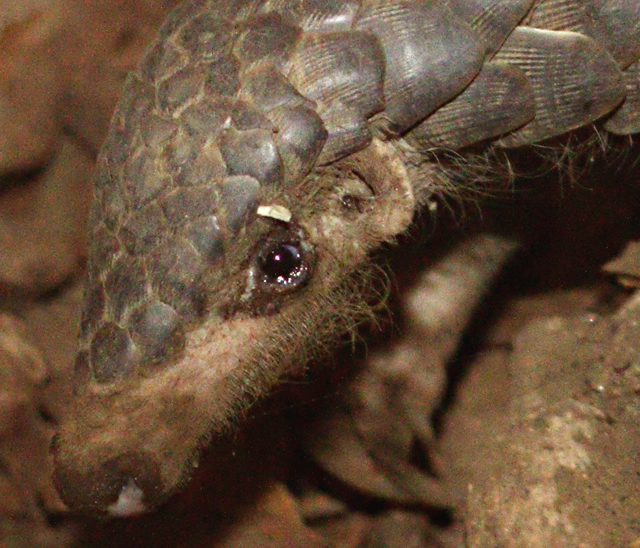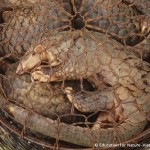A summary of Vietnam’s pangolin trade spanning six years.

A pangolin trade report compiled earlier this year by NGO Education for Nature-Vietnam (ENV) has uncovered disturbing information about the trafficking of these little-known mammals.
The synopsis covered the period January 2005 through June 2011 and included the Chinese pangolin (Manis pentadactyla) in the northern areas and the Sunda pangolin (Manis javanica) in the southern areas.
Both species are classified as Endangered on the IUCN Red List of Threatened SpeciesTM.
In total, ENV documented 159 pangolin trade cases over six years. According to the report, at least 3,385 pangolins (not including scales-only shipments) were confiscated by Vietnamese authorities during that time.
Unfortunately, this probably represents only the tip of the iceberg.
Given that authorities are believed to interdict only a small fraction of the total pangolin trade, the total volume of pangolins traded in Vietnam during this period is likely to be considerably higher.
Meanwhile, 178 incidents of “advertising or sale of pangolins or products made from pangolins” at traditional medicine shops and restaurants (dishes made from pangolin flesh and pangolins soaking in wine) were recorded.
Pangolins scarce in Vietnam
ENV found that most pangolin seizures in Vietnam took place the northern provinces (en route to China), and consisted of animals sourced outside the country.
It is further suggested that the pangolin trade destined for Chinese markets may originate as far away as Indonesia and Malaysia and move up overland through Thailand and transit through Laos and Vietnam to China.
Pangolins have apparently become increasingly scarce in Vietnam, based on information obtained from hunters.
However, seizures made in the southern provinces involved “notably” fewer pangolins, suggesting that these animals were sourced locally, with the exception of 17 pangolins in Tay Ninh, possibly from Cambodia.
Smuggling ‘rife’
Smuggling of “pangolin shipments” is rife in Vietnam, comprising 118 of the 159 cases documented by ENV during the six years.
Vietnam’s largest pangolin seizures occurred in the ports of Hai Phong and Quang Ninh (the “sea links” to China), in shipments arriving from Indonesia.
Smaller numbers of pangolins and scales found in “warehouses or the homes of traders” made up the remaining 41 cases.
A ‘perfect storm’ of conservation challenges
Pangolin conservation efforts in Vietnam are met with a “perfect storm” of challenges.
Pangolin flesh and other derivatives (such as scales and fetuses) are in high demand for folk remedies and as “delicacies”.
ENV noted that when live pangolins are confiscated, there is no rescue center or zoo that can accommodate the animals.
Authorities typically auction off confiscated pangolin shipments, where they often end up re-entering the illegal market.
In addition, although pangolins are listed as CITES Appendix II and thus “subject to particularly strict regulation in order not to endanger further their survival and must only be authorized in exceptional circumstances”, permits for commercial trade can be granted by local authorities (Group 2B of Decree 32 of Vietnam’s wildlife protection law).
The report concluded that “the bulk of the pangolin trade appears to be still heading for Chinese markets” as of June 2011.
How to help
You can help Education for Nature-Vietnam (ENV) make a difference for Vietnam’s wildlife.
Check out ENV’s website at envietnam.org to learn more.
You can also help with a pangolin t-shirt: Project Pangolin is contributing $2.00 per t-shirt or hoodie to Education for Nature-Vietnam.
Author: Rhishja Larson. Learn more about Rhishja here.
Image by nachbarnebenan, via Wikimedia Commons
Source: Education for Nature-Vietnam. Pangolin Trade Synopsis June 2011. Hanoi, Vietnam. Download it here.


![Pangolin Trafficking: 2011 to October 2013 [Infographic]](http://pangolins.org/wp-content/uploads/2015/08/WorldPangolinDay2013-01-copy-150x150.jpg)

Comments are closed.